#Dissention leitmotif
Explore tagged Tumblr posts
Text
A Taste for Adventure

Album: Homestuck Vol. 9 Composer: Seth Peelle Leitmotifs: Dissention, Carefree, Showtime Characters: Jake English, Jane Crocker, Dirk Strider, Roxy Lalonde, The Condesce, Grandma, Poppop, Erisolsprite, June Egbert
You may know this from:
[S] Jane: Enter.
[S] ACT 6 ACT 5
[S][A6I5] ==>
#homestuck music tournament#homestuck#homestuck music#A Taste for Adventure#Homestuck Vol. 9#Seth Peelle#Dissention leitmotif#Carefree leitmotif#Showtime leitmotif#Jake English#Jane Crocker#Dirk Strider#Roxy Lalonde#The Condesce#Grandma#Poppop#Erisolsprite#June Egbert#Bandcamp
11 notes
·
View notes
Photo
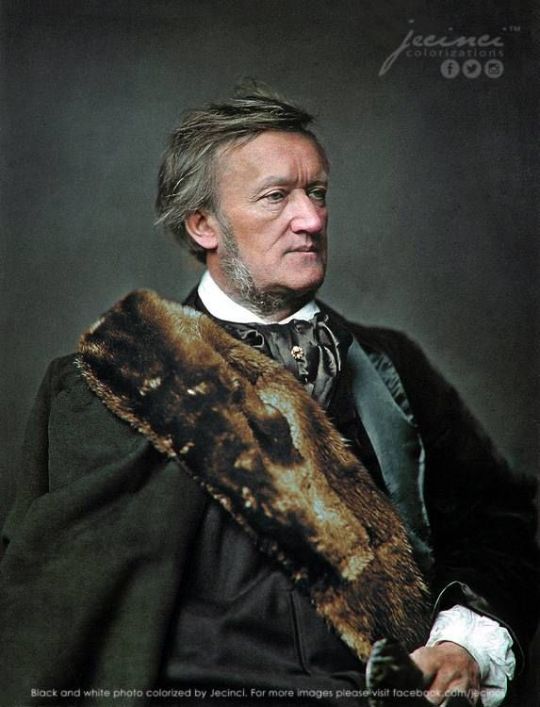
I write music with an exclamation point!
- Richard Wagner
If he were alive today Wagner would be 210 years old. Born on 22 May 1813, Wagner lived a tumultuous life created by his own very unstable personality. But there is no denying the man, infamous for his antisemitism, political exile, and constant poverty, was also a genius in every manner imaginable.
It is no stretch to say that without Wagner, music, theatre, and even other art forms such as cinema, would not be what they are today. Wagner created modern music and modern opera. He revolutionised the theatrical experience for audience members. He reshaped the understanding of what opera was and could be.
He was not only a composer, but also a librettist, conductor, stage director, actor, philosopher, writer, and poet. However, few composers are as divisive as Richard Wagner. Even putting aside his controversial character, holding political and antisemitic views, his music split audiences. A bit of a megalomaniac, his operas became all-engulfing “music dramas”, drawing on his concept of the Gesamtkunstwerk (the total work of art) which synthesised music and poetry with stagecraft, a unification of the arts through theatre. He even had an opera house built – the Bayreuth Festspielhaus – specifically to stage his works - one of the most incredible theatres in the world.
Wagner’s music was revolutionary and it influenced generations of composers. Claude Debussy made two pilgrimages to Bayreuth. In 1877, after hearing Act 1 of Tristan und Isolde, he declared it “decidedly the finest thing I know”, but by 1903 he had turned dissenter, commenting that Wagner was “a beautiful sunset that was mistaken for a dawn”.
Although other composers had used Leitmotifs before, Wagner took it to new levels. Der Ring des Nibelungen - his epic 15-hour tetralogy based on Norse sagas charting the fall of the gods - employs recurring Leitmotifs that represent characters, objects, actions and emotions. Indeed His works are among the first to be truly through-written without functional musical numbers that stopped for applause. He broke from previous musical tradition in how he saw his works as symphonies, the orchestra’s complexity pushed beyond anything realised before.
#wagner#richard wagner#quote#opera#classical music#music#musical theatre#the ring cycle#composer#german#bayreuth#genius#culture#arts
54 notes
·
View notes
Text
ok let’s do it: Mo Dao Zu Shi, the Musical!
some disclaimers: this is an attempt to fit a story that is patently not an anglo american musical theatre shaped story into that structure, so there is aggressive and deliberate compression of storylines to make it fit that shape. this is almost certainly, objectively, a worse version of the story. i was interested in experimenting not with how a totally open-ended, free range musical structure where everyone gets a song and leitmotif and an arc could be used to tell the story, but how the story could be transplanted into this very constrained narrative form. and this is what i’ve got (with links, where applicable, to the songs that inspired each idea)
Opening Number: “The Fall of the Yiling Patriarch.” Good news! He’s dead! We learn about the wicked Wei Wuxian and his Yin Tiger Tally through the ensemble’s celebration of his death. We hear the first strains of our Jiang Cheng theme as he is described as the hero who killed the Patriatch-- maybe. There are a lot of versions of the story. Before dissent can turn into fighting, 3zun emerge as the voices of peace, painting a picture of the bright future now that WWX is gone. Jiang Cheng and Lan Wangji enter to triumphant celebrations of their role in his downfall. But before it can get much farther-- Lan Wangji suddenly interrupts, insisting everyone has the story wrong. Lan Xichen pulls him aside and tries to talk him down, to no avail, and as Jin Guangyao and Nie Mingjue rouse the ensemble up into celebration again to cover, Lan Wangji tries to make his voice heard as the Lan force him away.
Scene One. 13 Years Later. Wei Wuxian (in Mo Xuanyu’s body) wakes up in a forest to the whispering of Jin seniors, who are laughing at poor, stupid Mo Xuanyu, who clearly tried to cast some kind of array and failed. They mock and bully him, then lose interest and wander off to get to work on the night hunt they’re here to undertake. WWX is affronted: don’t they know who he is? This kicks off the number: “I Guess I’m Back,” a montage-like number that carries us all the way through the scene. In this first phase, he works out the spell MXY was trying to cast, and reflects on the bad reputation that made MXY choose him. He reckons he’s meant to get revenge on those Jin seniors, and resolves to do it as quickly as possible in order to retreat from the cultivation world, explaining some of his tricks to the audience in the process. The song recurs as he realizes this night hunt is an absolute minefield of the exact people he needs to avoid: first encountering Jin Ling, then catching a glimpse of Jiang Cheng, then the arrival of the Lan juniors. He starts to leave the juniors to squabble, one of the Jin boasting about a mysterious new spiritual device he has, when said Jin in fact releases (what we will learn is) the cursed arm spirit. WWX doesn’t want to get involved, but can’t leave these kids to die, and summons Wen Ning. This brings a convergence of everyone WWX has been actively trying to avoid, notably Jiang Cheng and the first appearance of Lan Wangji. The song culminates in WWX accepting what he’s trying to avoid: he’s back, and that means he can’t escape his old enemies. Then he passes out.
Scene Two. WWX wakes up and realizes he’s in Cloud Recesses. His initial response is panic, but he’s interrupted by ghosts of the past, younger versions of WWX, Jiang Cheng, and Jiang Yanli passing through. WWX muses about whether an additional ghost will appear-- but instead it’s the man himself: Lan Wangji. He asks WWX to take a look at the cursed arm, and WWX demurs, asking whether the illustrious Lan would really want the perspective of a random junior cultivator. LWJ makes it clear he knows exactly who WWX is, but refuses to explain how. WWX agrees to go, but lingers to see a last memory: his younger self teasing a young LWJ.
LWJ summons the arm and it immediately nearly overpowers them. They realise it’s pointing somewhere, and put together that someone must have deliberately given it to the Jin cultivator. LWJ suggests they follow where it leads, but WWX can’t resist teasing Wangji: “Is That A Rule?” (this structure meets this energy). In counterpoint with their younger selves, WWX asks whether the prim and proper Hanguang-jun will really go tearing off across the countryside with a supposedly-dead criminal, while their younger selves argue over WWX’s constant rule-breaking. They set off.
Scene Three. We find ourselves in a city street with Jin Ling and Jiang Cheng. The latter sends Jin Ling to stay in an inn while he tries to find Mo Xuanyu. Jin Ling sulks about how great things will be “When I’m The Hero” (every Disney princess song ever). His uncle and father, he sings, fought a war when they were his age, and he’s not allowed to do anything. His uncle is obsessed with finding Wei Wuxian, and even though Jin Ling doesn’t believe he’s alive, if he is, he’ll prove himself by getting revenge for his mother’s death. As the song concludes, he spots LWJ and WWX passing through. He hides and overhears their conversation: the arm has led them this way, and they’ve heard rumors of a man-eating tomb in the forest-- surely that’s where it wants them to go. Jin Ling sees a chance for excitement and adventure, and hurries off to beat them there.
Scene Four. LWJ and WWX arrive at the supposed man-eating tomb, and find it’s definitely where the arm was leading them. Their arrival seems to awaken the corpses-- and Jin Ling, who is being pulled into their ranks, but is intermittently sufficiently aware of himself to try and fight back. As they fight, LWJ and WWX are able to spot the legs that match the arm, sewn onto a different body. They subdue the corpses and free Jin Ling, but LWJ spots a shadowy figure retreating into the trees. He follows, and as WWX waits for Jin Ling to wake up, Jiang Cheng appears. Cue “Promises,” a Confrontation-style number where Jiang Cheng-- with a full return of the theme music introduced for him in the opening number-- demands answers for what WWX has done. We see the images of their younger selves as Jiang Cheng asks why he betrayed the clan, why he killed their sister, why he never came home. WWX can’t answer. Jin Ling wakes, and just as he does, Jiang Cheng likewise hears a commotion in the trees. He orders JL to guard WWX and goes off to investigate. JL immediately tells WWX that he can go-- he wants to go see what all the ruckus is, too. WWX tells him he should show his uncle more respect, and JL complains that Jiang Cheng’s never been anything but over-protective and cautious. WWX tells him that his uncle was a war hero-- JL insists he knows already-- but WWX explains it was much more than that in another number: “The Miracle Brothers.” Bleeding between WWX’s narration and ensemble flashback, we learn the story of Jiang Cheng’s miraculous return after the fall of Lotus Pier, when rumor had it he’d been captured and had his core crushed by the Wen (kinda The Night That Goldman Spoke kind of vibes, in the combo of narration and emotional intensity). We also see the miraculous return of WWX from capture in the Burial Mounds, and the impossible power they both had when they came back (WWX is embarrassed by his younger self’s arrogance; the music takes a turn for the sinister, but not quite fully. We’re also introduced to a “kill the Wen!” musical motif). WWX sees LWJ coming as the song ends, and JL flees. LWJ admits he created a distraction to lure JC away, but couldn’t catch whoever was initially in the trees.
Scene Five. LWJ and WWX take a breather for the night. LWJ conks out at 9pm, right on schedule, much to WWX’s delight. He then summons Wen Ning. He asks how he’s alive, what’s been going on, but Wen Ning doesn’t have any good answers. WWX tells him to stick close, but lie low. Once all this is finished, they’ll start new lives together where nobody knows who they are. WWX goes to bed, and doesn’t realize that LWJ heard it all.
Scene Six. LWJ and WWX awake the next morning to news of an unexpected visitor: Lan Xichen. WWX elects to hide while LWJ talks to his brother, and WWC frets about his memories of “The Twin Jades of Lan” (and a return of Xichen’s theme from the first number): both perfect and both perfectly morally upright. The song bleeds into memories of his and LWJ’s conflicts over his new form of cultivation, and WWX finds himself wondering once again why LWJ suddenly doesn’t seem to hate him like he used to. LWJ and LXC both come to talk to WWX, who helps explain about the mysterious arm. LXC is sympathetic to their curiosity, but he feels it’s more important to contain the pieces they’ve found, rather than risk unearthing more danger. WWX is inclined to agree. But as they all prepare to return to Cloud Recesses, they see a distress signal set off by Lan juniors. LWJ and WWX agree to go investigate.
Scene Seven. The Lan juniors, plus Jin Ling, are in a sticky situation, surrounded by corpses. They find a hiding place, and Lan Sizhui suggests that maybe they could try to turn the corpses to their side. Jin Ling loses his shit: that’s demonic cultivation, that’s what Wei Wuxian used to do, how dare he even suggest that? They start arguing in a partial reprise of Jin Ling’s song from before, and the corpses are encroaching when WWX and LWJ arrive to help fight them off– mostly LWJ.
WWX asks how they got here, and the juniors say they were led by a series of mysterious incidents. Once the corpses are gone, they get a chance to look around where they are, and find what seems to be an abandoned workshop of some kind. There are pieces of bodies… including the torso and arm of the corpse they’ve been assembling. Jin Ling recognizes this at once: this is a demonic cultivator’s workshop. Somebody’s been experimenting trying to create a creature like the Ghost General, Wen Ning. [If one is feeling really self-indulgent, they find the corpses of A-Qing and Song Lan, who narrate the Yi City Arc in a “Small House of Uncle Thomas” style totally random interlude]
As the boys squabble, Wei Wuxian sees something else, though: a memory of another brilliant experimenter, Wen Qing. He sees her begging him to “Save My Brother,” only for the tables to turn as they go farther back in the past, and Wei Wuxian begs the same thing of her. Wei Wuxian is overwhelmed, and LWJ insists everyone returns home. Jin Ling says there’s only one place to bring this mysterious corpse: to his other uncle, the Chief Cultivator. We transition to…
Scene Eight. … “Jinlintai,” (aka, JGY’s theme from the first number, kinda the vibes here once they get to the club, only JGY doesn’t come off as so evil, just that Jinlintai is kinda louche) where the boys discuss the incredible rise of Chief Cultivator Jin Guangyao from illegitimate orphan to NMJ’s clerk to spy to head of the Jin and Jin Ling boasts about the luxuries of his clan. JGY comes to greet them, and LXC is unexpectedly with him. JGY welcomes them all graciously, but WWX notices that the arm is acting strangely. He manages to convey to a reluctant LWJ that he’s going to investigate, and slips away.
JGY leads the juniors off, and LXC and LWJ are left alone. LWJ expresses his surprise at finding LXC here; LXC expresses his concern about LWJ’s recent behavior, and hints that he knows who WWX is. A short reprise of “The Twin Jades” as they both promise to trust each other, as they always have.
Act One Finale. Wei Wuxian is alone in the treasure chamber, and it doesn’t take him long to find what he’s looking for: the corpse’s head. Specifically, Nie Mingjue’s head. He offers up an apology to Lan Zhan for the risk he’s about to take, and we begin the “Empathy Dream Ballet” (cf the Carousel Ballet, or the Oklahoma! dream ballet, but I think this would probably have some dialogue or lyrics). As the story of NMJ and JGY’s relationship progresses towards NMJ’s death, the actual Jin Guangyao approaches. As WWX snaps out of the vision, everything fades-- except the actual JGY, who is standing right there. Blackout!
#i have Way Too Many Thoughts if you'd like to hear more of my thinking behind this sldfjsdf#this is uh only act one#act two will come....... later#sorry this entertained me a lot sjdlfsdf#i like thinking about adaptation and structure
48 notes
·
View notes
Photo


Looking at the history of emptiness in modern art I am often reminded of Zeno’s paradox of Achilles and the tortoise. Zeno imagined a race, in which Achilles would generously grant the tortoise a head start of say 100 metres, and each would move at a steady, unchanging speed. His conclusion was that Achilles would never be able to catch up with the tortoise, because every time he came close, the tortoise would have had time to move a little further, so that the distance between them would endlessly decrease to a few yards, a few metres, one metre, 0.1 metre, 0.01 metre, etc. In the same way, every time the audience of modern and contemporary art is led to believe that the avant-garde reduction of the artwork to a minimal, barely perceptible form can go no further, along comes another artist who creates another even more minimal, even less perceptible, artwork.
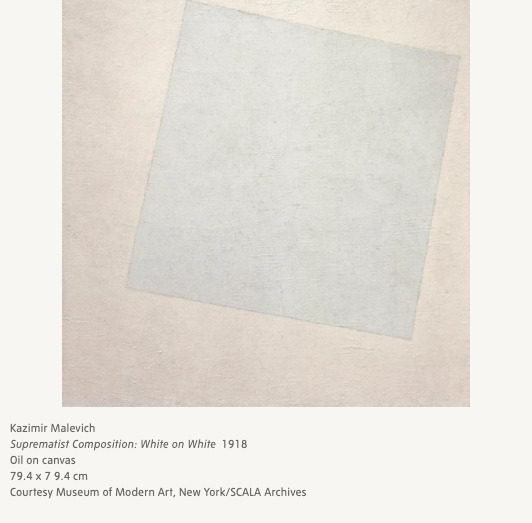
Thus, it seemed that the history of modern art had reached its zero point when Marcel Duchamp presented a glass pharmacy phial filled with Paris air to an American collector in 1919, or when Kazimir Malevich painted his White on White composition in 1918, and two years later filled a room with, as one person noted, empty canvases ‘devoid of colour, form and texture’ on the occasion of his first solo exhibition in Moscow. Yet in a 1968 article, critics Lucy Lippard and John Chandler could only observe that ‘the artist… has continued to make something of “nought” 50 years after Malevich’s White on White seemed to have defined nought for once and for all. We still do not know how much less ‘nothing’ can be.’ Thirty-five years later, Gabriel Orozco’s sole contribution to the Aperto exhibition at the 1993 Venice Biennale consisted of an empty shoe box, eight years before Martin Creed notoriously won the Turner Prize partly for his installation Work No. 227: The lights going on and off at regular intervals. Nearly ten noughty years down the line, and shortly after a museum survey entitled Voids: a Retrospective presented visitors with nine perfectly empty rooms, we are still none the wiser about ��how much less “nothing” can be’.
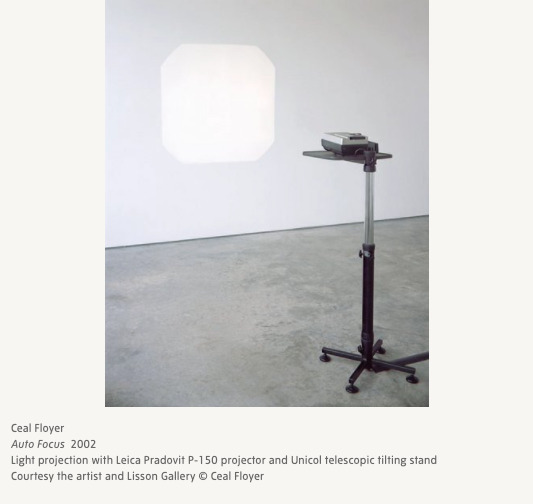
Year after year, decade after decade, however, one thing doesn’t seem to change: if we haven’t walked through, on, or past the artwork without noticing it, our reactions to this kind of barely perceptible, almost nothing, practice will predictably range from puzzlement and laughter to anger and indignation. Even before Malevich’s 1920 exhibition, a French cartoonist had imagined in 1912 that the empty canvas would be the next avant-garde prank visited on its baffled public. In the caption, the artist presenting his blank canvas explains in a pun on the then-current Futurist movement: ‘It’s the most futurist picture of all – so far it is only signed, and I’ll never paint it.’ As the emptiness and reduction of blank canvases, of white or black monochromes and of Duchampian readymades were extended to silent concerts and empty galleries in the second half of the twentieth century, the question remained: are all these forms of emptiness so many variations on the same provocative joke?
The first documented entirely empty exhibition, Yves Klein’s The Specialization of Sensibility in the Raw Material State Into Stabilized Pictorial Sensibility – better known as The Void – at the Galerie Iris Clert in Paris in 1958, certainly had all the trappings of an elaborate PR stunt. Not only did Klein empty the exhibition space and paint the remaining walls and cases white, he also posted two Republican Guards in full uniform at the entrance of the gallery, served blue cocktails especially ordered from the famous brasserie La Coupole and had even planned to light up the obelisk on the Place de la Concorde with his brand of International Klein Blue. While the last event was cancelled at the last minute, an estimated 3,000 visitors did show up on the night of the opening, filling the streets around the gallery as they waited to enter the exhibition space through blue curtains, one small group at a time. The crowd was finally dispersed by the police called in by disgruntled visitors who had felt swindled after paying their entrance fee to be shown an empty gallery. In some ways, the succès à scandale of The Void has obscured Klein’s very idiosyncratic brand of showmanship and mysticism. His interest in the immaterial was genuine, inspired by his exploration of monochrome painting and his belief, influenced by Rosicrucianism, that humans must strive to liberate themselves from flesh and matter.
If some artists since Klein have embraced such spiritual readings of the void, a more general preoccupation with the invisible seems to account for many empty exhibitions in the past 50 years or so. Maria Eichhorn, a German artist whose early work includes white texts written on white walls, speaks for many artists when she explains: “There is such a fixation in our Western culture on the visible, which explains why we think that… a room is empty… because there is nothing visible. But I’ve never thought that an empty room is empty.” In the late 1960s Robert Barry had already pointed to the imperceptible forces that literally surround us by introducing radio waves as well as magnetic currents into the gallery space. American artist Maria Nordman has tried to focus viewers’ attention on the light falling through an empty gallery’s windows at different moments of the day and of the year. More prosaically, other artists have invited visitors simply to contemplate the architecture of the gallery. Arriving in 1993 at the Museum Haus Esters in Krefeld, originally a house designed by Mies van der Rohe, British artist Bethan Huws felt she could not add anything to the beauty of the modernist building. Instead, she distributed a poem to visitors and let them admire the gallery for itself.
In the 1970s American artist Michael Asher pioneered strategies through which to reveal the architectural structure of the gallery. At the Clare Copley Gallery in 1975, for example, he simply removed the wall separating the empty exhibition space from the art dealer’s office. By opening up this space, the artist was not only inviting visitors to consider its architectural features: he also reminded them of the Business transactions taking place behind the walls of commercial galleries. After Asher, other artists have explored the invisible networks of art business and institutional presentations that frame the art we view. Maria Eichhorn used the budget allocated to her show at the Kunsthalle Bern to tackle the institution’s debts and fund much-needed refurbishments of the building (Money at the Kunsthalle Bern 2001), while in their 2005 Supershow – More than a Show, the collective Superflex used theirs to give each visitor two Swiss Francs instead of asking them to pay an entrance fee to see empty spaces adorned only by texts stating the physical properties of each room (surface, wall colour, maximum number of visitors, etc). Museum surveillance is alluded to in Roman Ondák’s 2006 More Silent than Ever, which warns visitors that hidden listening devices are installed in the room.

Presented with invisible elements such as Ondák’s listening devices or Barry’s magnetic fields, we are left wondering whether to believe the artists’ claims since, after all, there is no adequate way to confirm them. We come to realise that our relation to the work is predicated on knowledge, presuppositions and some form of trust in the authority of artists and art institutions. British artist Ceal Floyer traces her interest in minimal displays back to her experience as a gallery invigilator while she was an art student. ‘I watched a lot of art being seen. And a lot of art being not seen,’ she remembers. ‘That was a training in itself. I discovered that presumption is a medium in its own right.’ As with Creed’s The lights going on and off , Floyer’s plastic buckets and black rubbish bags casually sitting in the gallery certainly reveal to us our prejudices and expectations as to what art is or should be. Gabriel Orozco says he actively seeks to disappoint his viewers. Is my irritation at being presented with an empty shoe box or lights going and off ultimately good for me?


The veiled hostility directed by the artist at the viewer situates such attitudes in the context of more radical declarations against art and its institutions. When presenting her empty exhibition at the Lorence-Monk Gallery in New York in 1990, American artist Laurie Parsons went so far as to refuse to include her name on the invitation to the opening and to remove all reference to the show from her CV. Four years later, she ceased to produce works altogether, thus following a line of artists before her who deliberately decided, as part of their practice, to give up, or take a break from, the profession. From this perspective, the empty gallery is less an artwork than a gesture – of provocation, dissent and critique. As Brian O’Doherty has shown in his well-known study of the modern “white cube” gallery, such a gesture ‘depends for its effect on the context of ideas it changes and joins’. For the gesture to succeed, its timing, place and audience have to be just right. Sometimes it can be understood only retrospectively, as it becomes historicised.
It would be unfair, however, to reduce all explorations of emptiness, nothingness and the invisible to the rhetoric of the gesture. To return to Orozco’s Empty Shoe Box: when it was first shown in 1993, it certainly poked fun at the Venice Biennale’s frenzy of publicity and consumption, but it also served as a memorable image of the container or vessel that is a leitmotif in the artist’s work. ‘I am interested in the idea of making myself – as an artist and an individual – above all a receptacle,’ stated Orozco. Playing with contrasts between empty and full, his work as a whole exemplifies a sensitivity to reciprocal spatial relations. In a notebook, he compares discarded pieces of chewing gum on a pavement with the stones placed on a board in the Asian strategy game of Go. Like Empty Shoe Box, the Go stones and the spat-out blobs of gum occupy and cut out space, demarcating a territory according to very specific patterns of chance and intention.
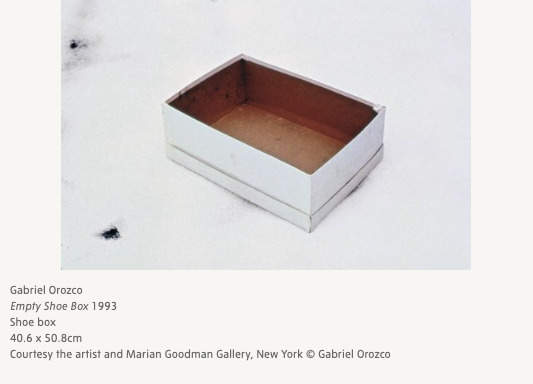
Many artists have similarly been interested in the space between objects. Both the Belgian Joëlle Tuerlinckx and the Brazilian Fernanda Gomes often present arrangements of small, discrete everyday objects scattered around otherwise vacant gallery spaces. Tuerlinckx describes the exhibition space as ‘a kind of parcel, a packet of air’ that she is invited to open and explore through her work; Gomes says she never comes to the gallery with a pre-defined plan. In these installations, the empty gallery becomes a blank page to be inscribed (as in Tuerlinckx’s spatial drawings), or the pregnant void that surrounds objects in paintings such as Giorgio Morandi’s (in Gomes’s three-dimensional still-lifes).
Painting is also a surprising reference for the performances staged by Marie Cool/Fabio Balducci, during which Cool stands in an empty room as she enacts a series of repetitive, extremely precise gestures using flimsy everyday materials such as paper, tape, or thread. The French- Italian duo has claimed that the image of a figure hovering in an undefined yet meaningful space was inspired by early Renaissance religious painting such as Simone Martini’s Annunciations. The empty gallery as a stage for action has also been effectively used by Martin Creed, when he asked runners to sprint down the Duveen Galleries at Tate Britain, one by one at regular intervals, in 2008, or by British-German artist Tino Sehgal, who in 2010 choreographed two continuous scenarios, involving three actors, in the spiral rotunda at the New York Guggenheim Museum.
Placed in vast expanses of void, both bodies and objects appear more vulnerable. On the one hand, such installations provide an alternative to the spectacular displays encouraged by increasingly large-scale museum and gallery spaces. By celebrating the commonplace, the barely noticed, as well as frailty and precariousness, artists thus seem to be actively resisting the pressure to create ever-bigger, glossier, more awe-inspiring works. On the other hand, however, such minimal mises en scène can create new forms of spectacle – as when Maurizio Cattelan places his miniature self-portrait, a resin figurine hanging from a clothing rack, in a corner of the empty gallery in order to emphasise his apparent failure to take on the revolutionary role of 1970s artists such as Joseph Beuys (to make the point, the Cattelan mini-me is clad in Beuys’s signature felt suit).
While such formal devices are often little more than simple gimmicks, works that effectively stage their own weakness and vulnerability can raise questions about the institutional and social conditions that guarantee their existence as art. In Hans Christian Andersen’s tale of The Emperor’s New Clothes, a naked emperor is persuaded by his tailors that his fine clothes are visible only to intelligent people; his subjects, afraid like him to admit that they cannot see them, applaud his outfit until a small child in the crowd finally blurts out the truth – ‘But he’s got nothing on!’ Though above all a cautionary tale against the deceptive powers of flattery, vanity and sycophantism, the story also provides an image of the willing suspension of disbelief required by most forms of art. After all, the artist’s deception, like the cheating tailors’, could never work without our participation. In his 2002 work Lament of the Images, Chilean artist Alfredo Jaar mobilises this kind of community of believers by presenting us with two dark, apparently empty rooms. In the first, we come across three small backlit text panels relating real stories about invisible or impossible images, such as the fact that the United States Defence Department purchased the rights to all available satellite images of Afghanistan during the 2001 air strikes so that the global media could not publish them. The second room houses a single, brightly lit, empty screen. Blinded by its light, we are reminded of our own blind spots – our complicity in the invisibility of certain images and in the existence of many an emperor’s new clothes.
5 notes
·
View notes
Text
Taking on the Offendotrons: a review of Russell Blackford’s ‘The Tyranny of Opinion’ by Helen Dale
It’s fair to say I have a leitmotif when it comes to commentary. Starting in 2015 (in the Guardian) and multiple times since, I’ve written about offendotrons getting people sacked for their dissenting from progressive orthodoxy breaching politically correct speech codes. Typically, these episodes begin with something like an open letter, a Twitter pile-on, a petition. Sometimes the desired outcome isn’t a sacking. It can be having a book or paper withdrawn, or a publication contract terminated, or no-platforming a speaker, or inducing advertisers and funders to end financial support. Occasionally, it veers into criminality—doxxing, calling police to an individual’s house (known as “swatting”), street harassment.
https://quillette.com/2019/01/28/taking-on-the-offendotrons-a-review-of-russell-blackfords-the-tyranny-of-opinion/
1 note
·
View note
Text
CHAPTER II: The Things You Kill For
“This is it, Atropos. Your first kill.”
Olivia Fox and Atropos Leitmotif were assassins. Bounty hunters. Mercenaries. Hired guns. Agents of the ancient craft of death. Apathetic predators trained to make a single bullet count. Their greatest weapon was patience, and no prey would be considered impossible. While Olivia had years of experience under her belt, Atropos was fresh out of training, but eager to prove that she wasn’t green around the gills. She didn’t plan on being a reason for the two of them to return to their client with failure. They’d spent weeks together preparing specifically for this kill, a high stakes mission that one might think the fate of nations depended on. No mistakes could be made, and no bullshit would be tolerated. If anyone was nervous about the operation, it was Olivia, for she was concerned that Atropos was too eager to make the mission count and would incidentally set the both of them up to bust.
“How do you feel?” Olivia asked as her statement was met with silence.
“Eh. My neck hurts a little,” Atropos joked. Olivia nudged her and the pair laughed. They sat together on an empty tram that was headed for the destination of their kill. It weaved through tunnels of unfinished walls lined with metal beams and wiring that put off the occasional spark. It was obvious that the speed of the tram had not yet been tested, as the curvature of the railway caused Atropos and Olivia to jerk back and forth for balance. Their black, steel gun cases shrieked as they slid slightly along the tram floor. The lighting inside the tram was minimal, with only a few security lights intact along the roof. It was amazing that the tram was even running, Olivia thought, but it was integral to the success of the operation.
Suddenly, the tram emerged from the tunnel system. It was now running along the outer surface of the one and only Ereshkigal Interplanetary Detention Facility, mere hours before it was set to begin operating with an impromptu ribbon cutting ceremony. Somebody on the inside of Hydrangea’s operations had informed Olivia and Atropos’ client when and where the ceremony would be precisely, which allowed them not only to be prepared to board the facility, but swiftly make their way to it without being detected thanks to the technically finished and mazelike tram system. The tram was headed to the loading bay, where prisoners from across the Cosmos were destined to make their way into the facility by way of specially designed detainment ships. It was there that a crowd of reporters, politicians, and protestors had gathered to witness the ceremony. Thankfully, also according to the inside source, a catwalk was constructed above the loading bay, allowing for a perfect angle and opportunity to take out the target. While simple in theory, the operation’s preparations were a cacophony of espionage, bribery, and a little bit of mathematics. However, none of this had anything to do with our dear trained killers. All they had to do was put a bullet in a skull. This, however, would prove to be harder than anticipated with the procurement of some unexpected events.
The tram wrapped around the facility, and finally, arrived at the perimeter of the brightly lit loading bay with a jerking halt, the both exuberant and agitated crowd of supporters and dissenters now in sight. As Olivia and Atropos peered out of the contrastingly dim tram car, the heraldry of some of the banners and flags hanging along the walls of the bay caught Olivia’s eye. The black and crimson icon depicting a steel-plated dragon was emblazoned on banners on either side of the podium where their target was no-doubt going to be speaking, a ceremonial red ribbon to the right of it, strung up between two fanciful aluminum poles that sparked in the light of the overhead fluorescents. These emblems belonged to the militaristic forces of a planet called Eltess, famed for its military power and powerful industries that supported it. Their presence had come as a shock to Olivia, as the ceremony had not been cited to have quite so much security. Some improvising was going to be necessary, as the Eltessians were sure to be monitoring the crowd for suspicious behavior, and neither huntress had to speak a word for that to be obvious. Weapon cases in tow, the pair stepped off of the tram and joined the crowd in the loading bay, a nearby ladder tucked away into a corner behind the crowd catching Olivia’s eye.
══╬══
With only minutes before the ribbon cutting ceremony’s impromptu commencement, an entourage of Hydrangea Tech constituents were enroute to the loading bay in a wide, cylindrical elevator that traveled quite slowly thanks to the safety precautions in place, as the Ereshkigal Detention Facility had not, in fact, been finished. Among the constituents were three advisors, two engineers, two programmers, two armed guards of the Eltessian Legion, a personal bodyguard dressed in black plated armor and a sheathed katana whose duty was to protect, last but not least, Siebold Luz. Siebold had recently become the face of Hydrangea Technologies, handling public affairs and interviews for the company in lieu of Hydrangea’s elusive CEO. It was thanks to the success of his original ENKIDU mobile device design that he had garnered such interest and popularity with the public. The company decided to assign him the protective assistance of Goemon Otani, his samurai-like companion who was also visible behind Siebold in all of his public appearances. News media and paparazzi across the Cosmos had deigned to piece together the puzzle of Goemon Otani, who dressed and possessed the stoicism of a comic book character, but to no avail.
Goemon stood with his arms crossed, leaning against the back of the elevator while the advisors showed Siebold charts and data on their clipboards, murmuring statistics and projections to his half-listening ears. The engineers and programmers just waited patiently for the elevator to arrive at the loading bay, and the Eltessian guards held their plasma rifles at the ready, as if a horrendous meteorite-borne creature would lunge through the elevator doors at any moment. Siebold nodded solemnly to the advisors as they clung to his side, trying desperately to be as stoic as his bodyguard in the face of his slightly sweating colleagues who were struggling desperately to keep him abreast of any and all situations within the barely functioning facility.
The elevator finally stopped, but visible confusion was instilled in the expressions of everyone except for Goemon when the curved doors slid open and revealed the freckled face of Legatus Sybil Voltaire, who was responsible for commanding the entirety of the 447th Legion of Eltessian Knights, the security force employed for the ribbon cutting ceremony. She looked, at least to Siebold, nonplussed, and a momentary air of annoyance seemed to emanate from her before she passed across the elevator’s threshold and took a place beside Siebold. The two Eltessian guards saluted her a few moments too late as they recovered from the shock of her appearance. Her auburn hair was tucked into a complimentary baseball cap with “HYDRANGEA TECH” sewn into it in bold white lettering. The hat was quite out of place alongside her legionnaire armor and appropriately equipped dual firearms resting in their holsters.
“So,” the Legatus began, staring at the closing elevator doors and certainly addressing none other than Siebold, ���Everything moving along seamlessly?” The elevator began its descent to the loading bay once again at the same snail’s pace.
Siebold chuckled. “Why, of course. Why else would we be holding the ceremony?” As the lie came through his lips, sweat formed on his forehead.
“Well, I can think of a few reasons, actually,” Sybil said, turning her head to glance at Siebold, “Wouldn’t look too good on the news if you cancelled now. But the trams aren’t done, and this damn elevator is still moving way too damn slow. Don’t get me started on the wiring around here, either.”
“And what do you care? Your duty right now is to be a glorified mall cap, no?” Siebold’s slight annoyance at the inquiry accidentally slipped through his teeth.
“Hey, ease up, baldy. I was just curious.”
Siebold scoffed, “I have alopecia.”
“Oh, sorry. I didn’t get to your autobiography yet.” The Legatus threw a wink over her shoulder to the grimacing Siebold, but the pair quickly lightened up quickly and laughed at each other’s quips and continued the elevator ride in silence. Their tense back-and-forth had filled all of their fellow elevator patrons with a permeating terror (except, of course, for Goemon), which seemed to make the two elites smile slightly.
“I don’t suppose you know why Hydrangea hired a last-minute security force for a tiny little ribbon cutting ceremony, do you?” the Legatus asked.
“Let’s just say that not everyone is happy about our little super prison,” Siebold seemed to moan. “Though I truly don’t understand why they hired out. There are plenty of capable Hydrangea security teams.”
“Well, I’m not complaining. I’m off-planet and I get a paycheck? Might as well be a vacation,” the Legatus sighed dreamily.
The elevator finally slowed to a halt, and the doors slid open to reveal the loading bay, abuzz with the chatter as the room failed to notice their arrival. Silence washed over the crowd as more and more people turned to notice the Hydrangea representatives stepping from the elevator toward the stage and podium. Siebold situated himself at the podium, Goemon directly behind him. Legatus Voltaire organized her soldiers and ensured that they were staunchly defending the stage from the potentially volatile crowd members. The other Hydrangea employees took seats in folding chairs that were positioned across the stage in a line ahead of the podium. One of the engineers brushed past one of the ornamental ribbon posts and fumbled to recover it from hitting the ground, earning nervous glares from his colleagues. All was now seemingly in place for the grand opening of Hydrangea’s newest pride and enjoy. That is, until something out of the ordinary caught the Legatus’ eye.
As Legatus Voltaire looked around the room, double checking the positions of her legionnaires, she noticed that an empty tram had arrived along the far wall of the loading bay, despite the fact that they weren’t supposed to be active. The doors had been left wide open, and whoever had arrived couldn’t be neither a Hydrangea employee nor an onlooker who would’ve arrived by shuttle. Something was most definitely afoot, and the Legatus was determined to ensure that the ceremony went smoothly. She rounded the crowd and scanned its faces, looking for any individuals who may be out of place. It didn’t help that some of the crowd was against the opening of the facility, their aggressive cries of dissent blocking out any other possible commotion. The Legatus was right about to be wary, but she hadn’t the slightest idea what was going to happen.
Far above the crowd and stage was a sprawling network of catwalks, and at the center of them Olivia and Atropos had set up their rifles on the catwalk railing, just in time for Siebold’s arrival. Their instructions were to wait until the end of the speech so that the masses would be well tuned in before the assassination. Atropos gazed in awe at the size of the amorphous crowd, trembling with excitement and rage. Dozens of cameras were positioned at the back of the crowd, ready to capture the making of history for news stations across the Cosmos.
“Remind me,” Atropos said, still looking over the railing, “why were we both assigned to this job?”
“Well, it is your first one. Client wanted to make sure it didn’t get screwed up. Besides, I’m the one who spotted the ladder up to the catwalk tucked away in the corner.”
“I was never told who our client is,” Atropos looked up at Olivia, “just some exposition about the fate of nations and planets. Did you get that spiel?”
“Oh yeah,” Olivia laughed as she threw her long, waist-length braid over her shoulder, getting into position behind her rifle, “I got that one.”
“I was kind of surprised that the Organization wanted to give me such a big job.”
“Well, that’s why I’m here, sweets.”
Atropos nodded in resignation, affirmed that Olivia had no answers for these strange circumstances. She took the same stance behind her own rifle right next to Olivia. “Who’s taking the kill shot?”
“Oh, for sure you. I’ll just be at the ready if you, y’know, fuck up.”
“Ah, well, gee thanks.”
“No problemo.”
Atropos relaxed her posture when it became obvious that there were still minutes before the speech in again. She watched with disinterest as the young scientist frantically sorted through papers atop the podium, attempting to organize his speech. The atmosphere was tense with the murmurs of the crowd who, whether eagerly or disapprovingly, anxiously awaited a message from the most influential scientific mind of our time and face of the entire Cosmos’ most depended upon mega corporation.
Small talk, it is, Atropos thought.
“I never did ask you how long you’d been with the ol’ Org’,” she offered.
“You sure didn’t. And if you had, I would’ve been pretty annoyed.” Swing and a miss. Olivia’s tone was steely.
“Oh. Oh?”
“Yeah,” Olivia sighed, “the ‘Org’’ doesn’t have employees.” She looked up from the scope of her rifle, her arms still staunchly at the ready. “They just have jobs that need doing, and we want to do them. Speaking of which, my turn,” her eye returned to the scope. “When you’re paid to be a killer- which, God knows how you ended up here and I’m not sure I want to know- you’re either doing it for the money or the notoriety. So, what’s the dream for you?”
Atropos hummed. “I wish I could say I had a simple answer. I don’t know. Fancy tech apartment on Charys with an accent-toting butler, sitcom-y type of thing, maybe?”
“Right, I should’ve known,” Olivia laughed, retiring her inquiry.
However, Atropos latched on to it. “Well, what about you?”
“Well, definitely the money. I don’t have a tragic backstory that involves hunting down the lifelong token of my hatred. Your thing sounds good, I’ll get that.”
Atropos then tried to reword her original interest. “And how long have you been in the game? Surely long enough for the manservant.” She tried to laugh at her own joke and cover up the curious tone of her question.
“Too long,” Olivia said, slowly, “and not long enough.”
I tried, Atropos thought.
You tried, Olivia thought.
“AHEM.” The first sound heard through the microphone on Siebold’s podium was an earthshattering, ear-piercing throat clearing, effectively peaking a microphone whose volume was somehow much too high. The sound was punctuated with the shock of mic squeal, causing both Olivia and Atropos to wince with their entire bodies.
“Sorry, sorry,” Siebold said as the mic volume gradually decreased. The two killers overhead recovered and got back into their positions. Atropos moved the crosshair of her scope across Siebold’s neck, as the client had specifically requested that Mr. Luz be shot through the throat. A symbol of the silencing of the corporations, or something.
“To begin,” Siebold’s voice rang out through the hanger, “I’d like to thank you all for coming to the unveiling of Hydrangea’s newest project. I think you’ll find that everything in this facility was designed with the best intentions and will put the entire Cosmos on a fast track to more peaceful living. This facility is not just a prison, but a place for reformation. Our goal is not to hide criminals away from the outside world, but to ensure that they get to enjoy it once more, without rotting away for years on end at the cost of the taxpayer’s money. As you know, I have been made the director of this facility, and it is my wish to see that every soul that passes through this facility will return to life as a decent person that will contribute to society in a constructive manner. Our staff has been dutifully trained and prepared for the handling of some of the Cosmos’ most bitter threats, all for the benefit of not only themselves but the Cosmos as a whole. The CCCP has happily sanctioned all of our efforts here in the months leading up to this ribbon cutting ceremony, and without further ado, it would be my honor to commence the operations of this here facility today, with this crowd before me to witness its glory.”
Siebold stepped down from the podium, pulling from it a set of standard household scissors. He approached the ribbon tied between the two ceremonial pillars, unaware of the sniper still carefully trained on his throat.
Impatient and ripe with tension, Olivia finally spoke up. “Well, what are you waiting for? I don’t think you were meant to wait this long.”
“Relax,” Atropos said, “I just want to make it count. All the more powerful while he’s cutting the ribbon, no?”
As the snip of the scissors in Siebold’s hand snipped the crimson ribbon, a voice rang out sharply from the already bustling crowd, calling out over the cheers of approval and cries of dissent. “SIEBOLD, GET DOWN!”
Siebold snapped to face the crowd, jerking his neck out of Atropos’s crosshair just as she pulled the trigger. The bullet passed through the rifle’s silencer with little noise, but the sound of it ricocheting off of the floor cast horror throughout the entire hanger. The crowd fell to shambles as people pushed over each other to escape from the scene. Legatus Voltaire and the ominous bodyguard Goemon rushed to Siebold’s side and held him down as she directed her men to the rafters. The eyes of the entire legion were now on Atropos and Olivia, both now panicking thanks to their failed objective.
“Fuck! I knew I should’ve taken the shot for you!” cried Olivia as she quickly packed up her own rifle. “What the hell were you thinking, waiting like that?” Atropos didn’t answer, knowing any response she could muster would fall upon ears deafened with annoyance. The two rushed across the winding catwalks as the legionnaires began scrambling towards the ladders situated against the walls of the hangar. “Unprofessional as shit!” Olivia threw the words over her shoulder as the pair dashed along the catwalk. Atropos trailed behind, her expression awash with shame and self-loathing. As the legionnaires scrambled up the ladders, Olivia and Atropos were running out of options. The screams of the crowd blotted out any potential idea-hatching.
Finally, Atropos seemed to come to her senses. “Why don’t we use the AAED?”
Olivia scoffed. “Are you kidding me? We’ll die trying!”
“Well, its that,” Atropos gestured to the legionnaires reaching the catwalk, closing in on their position, “or a hefty prison sentence. Take your pick.”
“Dammit!” Olivia reached into her gun case and pulled out what looked like a silver writing pen, fitted with a cap and all. She uncapped it revealing a point that blinked with a cerulean light. A small button on the side of the pen began flashing as well. “This is it, okay? I’ll get you back this time, but only because helping you is in my job description. After this, we’re finished, you hear me?”
“God, yes Olivia! Just do it!”
Olivia hit the flashing button on the pen, and within moments the pair became enveloped in an orb of cerulean light that burst forth from the tip of the pen. As the legionnaires crossed the catwalk, they flinched as the blinding light flashed before them. Legatus Voltaire below, still holding down Siebold, rolled her eyes as she watched the escape unfold. As the orb dissipated and the pair of assassins vanished from the hangar, the Legatus stood and pulled Siebold to his feet.
“Well, Siebold,” said the Legatus, “looks like somebody’s out to get ya.”
As the crisis abated, Goemon sheathed his katana and glanced out over the horrified crowd and confused legionnaires, finally uttering a response to the madness. “A new hunt begins,” he said in a gravelly voice.
0 notes
Text
On Wednesday, in the biggest single rally since street protests began in Yangon, hundreds of thousands of people gathered in a central district, holding up posters and signs designed for the Instagram generation.
“If we look at the history of resistance in Myanmar, we were quite aggressive and confrontational, with this history of bloodshed,” said Ko Kyaw Nanda, a graphic designer whose protest art contrasts green pig heads (the army) with ruby red heels (Suu Kyi). “With this new approach, it can be less risky for people, and more people can join.”
Myanmar’s military, which has ruled the nation for most of the past six decades, has locked up more than 450 people since the coup, according to a group that tracks political prisoners. The new regime has drastically diminished civil liberties, and its long history of violently suppressing dissent lingers. Security forces have shot and beaten anti-coup protesters. On Wednesday evening in the city of Mandalay, soldiers swept through an area housing railway workers who were boycotting work, shooting multiple rounds. At least one person was confirmed injured.
But the weapons of dictatorship have not deterred peaceful demonstrators, who have depended on humorous memes and protest art to carry them through.
“If the young people are out on the street then why can’t I be?” said Nu Nu Win, a retired civil servant who at the rally Wednesday carried a laminated sign with the face of Suu Kyi. “I want the whole nation to be out from under dictatorship.”
Online art collectives have made their designs free so that protesters can print them out for signs, stickers or T-shirts. One of the most popular pieces shows a collection of hands arranged in the three-finger salute from “The Hunger Games” films. Each hand was drawn by a different artist, a mosaic of defiance.
As she watched the protests grow, a freelance graphic designer who goes by the artistic name Kuecool decided she wanted to contribute. Although she had illustrated a book on feminism, she had not considered herself overtly political during her years of working at a public relations agency.
The overthrow of the elected government by the military, which she had grown up disliking, shocked her. She began drawing into the night.
One of her images is now used often in the protest movement: a young woman in a traditional sarong brandishing a wok and a spatula. The background is crimson, the signature hue of the National League for Democracy, which was ejected from government despite winning two landslide electoral victories.
Every night at 8 p.m., cities across Myanmar have clanged with the din of people banging pots, pans, woks and anything else that makes a ruckus. The aim is to ward off the devil, and the projection art appears at this time, too, adding visuals to the clamor of discontent.
Myanmar’s military rulers have long seen menace in the arts, imprisoning poets, actors, painters and rappers. Among the dozens of people nabbed alongside Suu Kyi in the coup’s initial predawn raids were a filmmaker, two writers and a reggae singer. A graffiti artist whose protest tags have enlivened Yangon over the past two weeks said he was on the run from the police. So were two poets. On Wednesday, arrest warrants were issued for actors, directors and a singer.
Zayar Thaw was a member of Generation Wave, a hip-hop collective that challenged the former ruling junta through sly lyrics. After serving five years in prison for his activism, he joined the National League for Democracy when it contested a by-election in 2012. Zayar Thaw won a parliamentary seat in a district once thought of as a military stronghold, settled down with reams of parliamentary paperwork and thought he had left his days of artistic protest behind him.
“Hip-hop artists already have a culture of revolution, so in our generation we protested through songs,” he said. “Now all kinds of artists are involved because they don’t want to lose the value of democracy.”
The artistic ferment in Myanmar today has drawn from other regional protest movements. During their months of sustained dissent in Hong Kong, young protesters enlivened their rallies with cute cartoons and colorful walls of sticky notes that evoked the so-called Lennon Wall in Prague, where art and messages of dissent against communism proliferated. Motivated by an earlier incarnation of opposition, the Hong Kong protesters popularized the use of the yellow umbrella against water cannons and turned it into a powerful meme.
In turn, the Hong Kong democracy movement galvanized pro-democracy demonstrators in Thailand, who staged months of mass rallies last year. Encouraged by the power of whimsy in Hong Kong, the Thai protesters, who have been standing up to a prime minister who led a 2014 military coup, deployed inflatable rubber duck rafts to ward off water cannons. They popularized the use of “The Hunger Games” salute, which Thailand’s former junta initially tried to ban with their state of emergency powers. (Nobody really listened.)
A couple days after the putsch in Myanmar, doctors, who launched a civil disobedience movement that has now compelled about 750,000 people to stop going to work, flashed their three fingers in protest. The salute is now the leitmotif of the Myanmar rallies, along with signs in English — all the better to attract international attention — denouncing the military takeover.
“I got inspired by how Hong Kong and Thai protesters used creativity and humor in their protests,” said Kyaw Nanda, the graphic designer.
The crosscurrents of protest are flowing both ways. Last week, a Thai youth group adopted the pots and pans campaign from Myanmar for a protest in Bangkok.
“In the region, there is a fight for democracy, human rights and justice,” said Aye Ko, a painter in Myanmar whose art has long expressed political yearnings. “The movement is beyond one nation’s issue. We have all joined together in the resistance against oppression.”
0 notes
Text
Steve Jobs Agenda - Harry Wessling | Business & Personal Finance |479321130
Steve Jobs Agenda Harry Wessling Genre: Business & Personal Finance Price: Get Publish Date: November 8, 2011 Steve Jobs' agenda, intelligent cutting-edge products, is an invigorating homage to Steve Jobs' outstanding lifetime achievement. It spotlights the exciting experiences Apple customers make during the process of being interested in Apple’s variety of products. The reader slips into the experiential perspective of the fascinating world of intelligent cutting-egde products, the most challenging product category industrial companies can produce. Anyone who has read this inspiring book, can understand why Apple has so many enthusiastic fans and firmly convinced customers and constantly succeeds in winning critical customers. The basic principles on which Apple's enormous success is based, draws like a leitmotif through everything Steve Jobs has created. His principles are explored and evalued by using concrete examples. This eBook invites you to an unusual journey through the fascinating world of Apple’s current offers along the great ideas of Steve Jobs. Find out why his agenda has led to great successes and his rather strange paths, which are located away from established management methods and were referred to as brilliant by influential people. Apple defines itself by what it sells every day. It is as simple as that. It’s about offers, which millions of people around the world compare to alternatives. Those who opt for the unique and intelligent cutting-edge products from Apple, usually get more than just a product. Customers choose Apple products because they associate something very special with them. Something you can already perceive while unpacking. With Apple everything is somehow different. With an outstanding award-winning advertising campaign, Apple already managed in it’s early history to win the dissenters. Apple challenged his potential customers to "Think Different". Today the need for distinctiveness is even more pronounced than ever. People want to be seen as individuals with their personal views and perceived ideas. Steve has managed to meet these needs through developing mass products and market them successfully. Find out more about it in this book. Enjoy reading.
1 note
·
View note
Note
do you have any thoughts, theories or anything to do with blavat?
Thanks for the ask! I sure DO! Here are my two “biggies”. Warning: LONG POST!!
I. Blavat Sky: the manga parallel to the anime’s Drocell Keinz
I have posted before (several times) likening Blavat to the anime-only character Drocell Keinz. Once a clever doll-maker, Drocell dies but is turned into a sort of mechanized doll. He doesn’t know he’s dead and doesn’t know he’s being used as a pawn by Angela/Ash (the angel) until Sebastian and “Ciel” force him to realize the truth. He’s very confident in his artistic/crafting abilities and thinks he’s doing what is “right” or “must be done”.
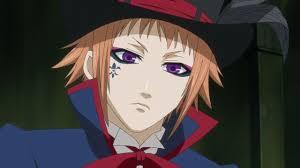
He draws people/victims in with music (performing as a street musician, basically) and then turns them into lifeless, mechanical dolls much like himself.
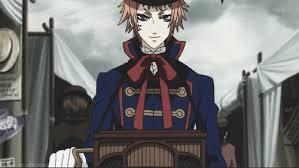
He draws Lizzie into his shop (she hears the music and then sees dolls inside). She’s looking for the perfect gift for “Ciel” and wonders whether Drocell might have something else there that would suffice. Drocell promises her that he has the perfect gift for her “Ciel” – herself, as a doll.
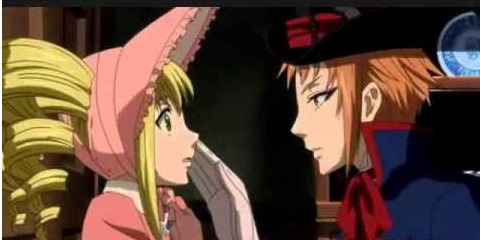
He begins the process of turning her into a doll, but “Ciel” and Sebastian save her just in time… after defeating Drocell and his army of previously-made dolls. It’s later revealed that he was just part of Angela/Ash’s plan to get hold of “Ciel”, apparently with the purpose of breaking the contract between “Ciel” and Sebastian.
Similarly, I see Blavat Sky as a talented guy who is confident (even arrogant) in his abilities.
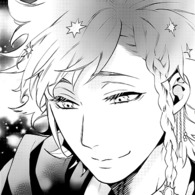
He is using his abilities (fake fortune-teller, lyricist, composer, choreographer, etc.) to draw people/donors/victims into Sphere Music Hall (and this “Blue Sect” cult). Instead of performing like a street musician, he performs as a fortune-teller and manages/produces/etc. an idol group – the Starlight Four.
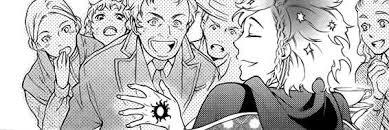
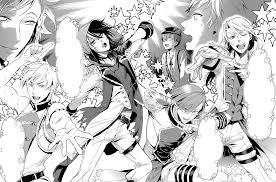
He might really think what he’s doing is important work, but he’s really just a pawn in someone else’s much bigger plans to ultimately get the earl in their clutches. Instead of Angela/Ash, it’s Lord Sirius (and probably Undertaker)… though an angel could make an appearance (I’m somewhat holding out for a big reveal from John Brown, the queen’s horsemaster and closest confidant). In both case, Lizzie’s presence (at Drocell’s shop in the anime, at Sphere Music Hall in the manga) lures “Ciel”/the earl (probably into a trap).
The anime scene where Drocell talks Lizzie into staying/getting “Ciel” a gift there… is visually very similar to the manga scene in which Blavat convinces Lizzie to stay at Sphere Music Hall for the supposed purpose of finding her “radiance”:
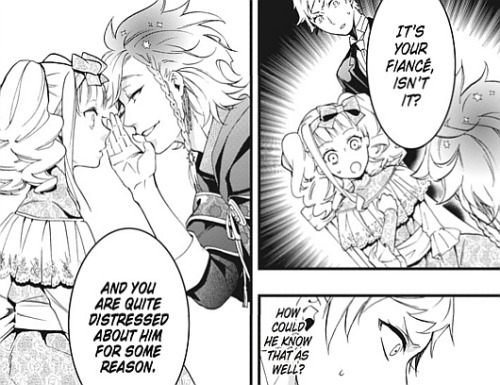
Like… really….

In both cases, Lizzie is drawn in by her worries over “Ciel”/the earl. In the anime it’s her desire to find “Ciel” the perfect gift (to make him happy), while in the manga it’s also her desire to find out how to make him happy again (and then apparently hoping to “save” him (or real Ciel)….
And then for the other major theory….
II. Blavat Sky: the Black Butler parallel to Mother3′s Miracle Fassad/Locria (and Lord Passion)
Actually, my theory for Blavat’s purpose and fate is the same, but this is just another parallel that supports it.
In Mother3, Fassad is this decidedly bad person who is not as he seems at all.

Fassad sounds like façade, French for “face” but used in English to mean an “exterior”, especially a “fake” one. In Arabic, fasad means “moral corruption”. Both associations are quite fitting because Fassad was once a Magypsy named Locria, but he rebels against the other Magypsies and becomes a pawn of King Porky. (Side note: Claus, Lucas’ twin brother, also becomes a pawn of King Porky and becomes known as the Masked Man.) Locria also suggests dissent (rebelling against the other Magypsies) because it is the musical mode known for extreme dissonance.
Instead of being a street musician (or managing an idol band), he controls a monkey (Salsa) and makes it deliver (to villagers) the Happy Boxes he’s selling. He’s a talented speaker and, as such, a successful salesman/merchant. He’s greedy, arrogant, and cruel.
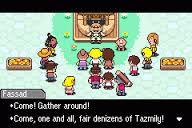
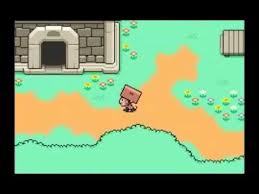

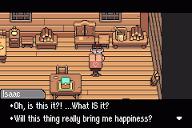
Fassad goes through some changes, being “upgraded” or “evolved” from Fassad to New Fassad, and again to Miracle Fassad.
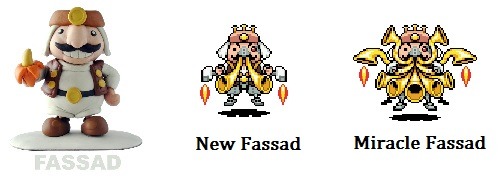
Fassad actually has three character parallels in Black Butler: Vanel (the drug dealer) is like the original Fassad… Harold West-Jebb (imports merchant) is like New Fassad… and Blavat Sky (essentially bartering for blood) is like Miracle Fassad.
Escapism, brainwashed contentment, this promise of “radiance”…. Is there much of a difference? Fassad (specifically Miracle Fassad), the poor “performing” monkey, and the brainwashing Happy Boxes are a bit like Blavat, the Starlight Four, and all they are “selling”… most-notably the concept of “radiance”.
Fassad’s not specifically associated with music in his original disguise, but once he’s mechanized he can no longer “talk” in anything other than corrupted Magypsy leitmotif (musical notes that suggest he was once a Magypsy). Lucas eventually defeats Miracle Fassad (and later figures out that he used to be Locria). Before Miracle Fassad disappears for good, he admits/realizes he’s just being used by King Porky, and that he’s tired of/done with it all… even though it means his defeat (and death). He thought his purpose was to spread “happiness” while gaining status under the new regime, but it was really just to lure Lucas to King Porky (and the Masked Man). Neither King Porky nor the Masked Man cared about him at all – just a pawn.
Another, much more minor, Mother3 character is associated with Blavat in my theory. Mr. Passion is a music-conducting ghost who parallels the traditions of Weston College. However, his stronger version, Lord Passion, is more like a parallel to Blavat.

TL;DR: The parallels to Drocell Keinz, Miracle Fassad, and Lord Passion suggest that Blavat Sky is arrogant, cruel, greedy, and attention-seeking. They also suggest he’s just being used by higher powers, and that he will be surprised and shamed in his eventual defeat.
Again, thanks for the ask! (Sorry it’s so long.)
68 notes
·
View notes
Text
Creata

Album: Homestuck Vol. 10 Composer: Seth Peelle Leitmotifs: Creata, Sburban Jungle, Showtime, Upward Movement, Aggrieve, Beatdown, Carefree, Doctor, Harlequin, Chorale, Endless Climb, Atomyk Ebonpyre, Frost, Something Really Excellent, Dissention, Revelawesome, Skies of Skaia, Song of Skaia Characters: June Egbert, Rose Lalonde, Dave Strider, Jade Harley, Skaia
You may know this from:
[S] CREATA (From MSPFA "Double Death of the Author
#homestuck music tournament#homestuck#homestuck music#Creata#Homestuck Vol. 10#Seth Peelle#Creata leitmotif#Sburban Jungle leitmotif#Showtime leitmotif#Upward Movement leitmotif#Aggrieve leitmotif#Beatdown leitmotif#Carefree leitmotif#Doctor leitmotif#Harlequin leitmotif#Chorale leitmotif#Endless Climb leitmotif#Atomyk Ebonpyre leitmotif#Frost leitmotif#Something Really Excellent leitmotif#Dissention leitmotif#Revelawesome leitmotif#Skies of Skaia leitmotif#Song of Skaia leitmotif#June Egbert#Rose Lalonde#Dave Strider#Jade Harley#Skaia#Bandcamp
6 notes
·
View notes
Text
Steve Jobs Agenda - Harry Wessling | Business & Personal Finance |479321130
Steve Jobs Agenda Harry Wessling Genre: Business & Personal Finance Price: Get Publish Date: November 8, 2011 Steve Jobs' agenda, intelligent cutting-edge products, is an invigorating homage to Steve Jobs' outstanding lifetime achievement. It spotlights the exciting experiences Apple customers make during the process of being interested in Apple’s variety of products. The reader slips into the experiential perspective of the fascinating world of intelligent cutting-egde products, the most challenging product category industrial companies can produce. Anyone who has read this inspiring book, can understand why Apple has so many enthusiastic fans and firmly convinced customers and constantly succeeds in winning critical customers. The basic principles on which Apple's enormous success is based, draws like a leitmotif through everything Steve Jobs has created. His principles are explored and evalued by using concrete examples. This eBook invites you to an unusual journey through the fascinating world of Apple’s current offers along the great ideas of Steve Jobs. Find out why his agenda has led to great successes and his rather strange paths, which are located away from established management methods and were referred to as brilliant by influential people. Apple defines itself by what it sells every day. It is as simple as that. It’s about offers, which millions of people around the world compare to alternatives. Those who opt for the unique and intelligent cutting-edge products from Apple, usually get more than just a product. Customers choose Apple products because they associate something very special with them. Something you can already perceive while unpacking. With Apple everything is somehow different. With an outstanding award-winning advertising campaign, Apple already managed in it’s early history to win the dissenters. Apple challenged his potential customers to "Think Different". Today the need for distinctiveness is even more pronounced than ever. People want to be seen as individuals with their personal views and perceived ideas. Steve has managed to meet these needs through developing mass products and market them successfully. Find out more about it in this book. Enjoy reading.
0 notes
Text
Steve Jobs Agenda - Harry Wessling | Business & Personal Finance |479321130
Steve Jobs Agenda Harry Wessling Genre: Business & Personal Finance Price: Get Publish Date: November 8, 2011 Steve Jobs' agenda, intelligent cutting-edge products, is an invigorating homage to Steve Jobs' outstanding lifetime achievement. It spotlights the exciting experiences Apple customers make during the process of being interested in Apple’s variety of products. The reader slips into the experiential perspective of the fascinating world of intelligent cutting-egde products, the most challenging product category industrial companies can produce. Anyone who has read this inspiring book, can understand why Apple has so many enthusiastic fans and firmly convinced customers and constantly succeeds in winning critical customers. The basic principles on which Apple's enormous success is based, draws like a leitmotif through everything Steve Jobs has created. His principles are explored and evalued by using concrete examples. This eBook invites you to an unusual journey through the fascinating world of Apple’s current offers along the great ideas of Steve Jobs. Find out why his agenda has led to great successes and his rather strange paths, which are located away from established management methods and were referred to as brilliant by influential people. Apple defines itself by what it sells every day. It is as simple as that. It’s about offers, which millions of people around the world compare to alternatives. Those who opt for the unique and intelligent cutting-edge products from Apple, usually get more than just a product. Customers choose Apple products because they associate something very special with them. Something you can already perceive while unpacking. With Apple everything is somehow different. With an outstanding award-winning advertising campaign, Apple already managed in it’s early history to win the dissenters. Apple challenged his potential customers to "Think Different". Today the need for distinctiveness is even more pronounced than ever. People want to be seen as individuals with their personal views and perceived ideas. Steve has managed to meet these needs through developing mass products and market them successfully. Find out more about it in this book. Enjoy reading.
0 notes
Text
Steve Jobs Agenda - Harry Wessling | Business & Personal Finance |479321130
Steve Jobs Agenda Harry Wessling Genre: Business & Personal Finance Price: Get Publish Date: November 8, 2011 Steve Jobs' agenda, intelligent cutting-edge products, is an invigorating homage to Steve Jobs' outstanding lifetime achievement. It spotlights the exciting experiences Apple customers make during the process of being interested in Apple’s variety of products. The reader slips into the experiential perspective of the fascinating world of intelligent cutting-egde products, the most challenging product category industrial companies can produce. Anyone who has read this inspiring book, can understand why Apple has so many enthusiastic fans and firmly convinced customers and constantly succeeds in winning critical customers. The basic principles on which Apple's enormous success is based, draws like a leitmotif through everything Steve Jobs has created. His principles are explored and evalued by using concrete examples. This eBook invites you to an unusual journey through the fascinating world of Apple’s current offers along the great ideas of Steve Jobs. Find out why his agenda has led to great successes and his rather strange paths, which are located away from established management methods and were referred to as brilliant by influential people. Apple defines itself by what it sells every day. It is as simple as that. It’s about offers, which millions of people around the world compare to alternatives. Those who opt for the unique and intelligent cutting-edge products from Apple, usually get more than just a product. Customers choose Apple products because they associate something very special with them. Something you can already perceive while unpacking. With Apple everything is somehow different. With an outstanding award-winning advertising campaign, Apple already managed in it’s early history to win the dissenters. Apple challenged his potential customers to "Think Different". Today the need for distinctiveness is even more pronounced than ever. People want to be seen as individuals with their personal views and perceived ideas. Steve has managed to meet these needs through developing mass products and market them successfully. Find out more about it in this book. Enjoy reading.
0 notes
Text
Steve Jobs Agenda - Harry Wessling | Business & Personal Finance |479321130
Steve Jobs Agenda Harry Wessling Genre: Business & Personal Finance Price: Get Publish Date: November 8, 2011 Steve Jobs' agenda, intelligent cutting-edge products, is an invigorating homage to Steve Jobs' outstanding lifetime achievement. It spotlights the exciting experiences Apple customers make during the process of being interested in Apple’s variety of products. The reader slips into the experiential perspective of the fascinating world of intelligent cutting-egde products, the most challenging product category industrial companies can produce. Anyone who has read this inspiring book, can understand why Apple has so many enthusiastic fans and firmly convinced customers and constantly succeeds in winning critical customers. The basic principles on which Apple's enormous success is based, draws like a leitmotif through everything Steve Jobs has created. His principles are explored and evalued by using concrete examples. This eBook invites you to an unusual journey through the fascinating world of Apple’s current offers along the great ideas of Steve Jobs. Find out why his agenda has led to great successes and his rather strange paths, which are located away from established management methods and were referred to as brilliant by influential people. Apple defines itself by what it sells every day. It is as simple as that. It’s about offers, which millions of people around the world compare to alternatives. Those who opt for the unique and intelligent cutting-edge products from Apple, usually get more than just a product. Customers choose Apple products because they associate something very special with them. Something you can already perceive while unpacking. With Apple everything is somehow different. With an outstanding award-winning advertising campaign, Apple already managed in it’s early history to win the dissenters. Apple challenged his potential customers to "Think Different". Today the need for distinctiveness is even more pronounced than ever. People want to be seen as individuals with their personal views and perceived ideas. Steve has managed to meet these needs through developing mass products and market them successfully. Find out more about it in this book. Enjoy reading.
0 notes
Text
JOHNSON REVIEWS LIFE IN AMERICA AND FIND IT GOOD
Max Frankel, The New York Times, 28 July 1967
President Johnson roused an audience of young men and women to their feet here today with a passionate defense of “the things that are right with America” and, incidentally, his Administration and policies.
Confronted by the most enthusiastic crowd he had faced in a long time—5,000 members of the Jaycees, formerly Junior Chambers of Commerce, and their wives from all parts of the country—Mr. Johnson piled paean upon paean and statistic upon statistic to compare life today and life in the "good old days" and life in America with life everywhere else.
Calls for Leadership “If you forget everything else I say, please remember this when you go back to your own community to provide them with the leadership that I want to provide you—that I'm trying so hard to provide you," the President asserted, making most of his points off the cuff. "You say to them that it's not absolutely essential; it is not a prerequisite; it's not required that you tear our country down and our flag down in order to lift them up."
The response was deafening. The young businessmen, aged 21 to 36. and clad in wildly colored vests and hats, were on their feet, cheering, whistling and cranking sirens. There had been a four-minute ovation at the start and the clapping barely stopped between the President's thoughts.
There was applause for the praise of patriotism and for the scorn for critics. There was applause for the derision to meet with Soviet Premier Kosygin and for the asserted result of a better understanding of the respective Soviet and American motivation and commitments.
There were cheers for the modestly phrased request for! support of the war In Vietnam—"to the extent that you can give it." And there were cheers for the view that the fight for "self-determination" in Asia is really a fight for the right to live that the United States asks for Israel—"for all the nations of the Middle East, and not just for some of them."
Theme and Purpose If the President had a theme in commenting on all his concerns from health to Holly Bush, it was that criticism and complaint should not be allowed to drown out great sacrifice and achievement.
If the President had a purpose, it was to tie together his problems and policies at home and abroad in a rationale that seems destined to become the leitmotif of his bid for re-election next year.
If he had any doubts, the crowd may well have begun to dispel them.
Mr. Johnson denied with some heat that the war in Vietnam was causing cutbacks in spending for education and for the poor. "Well, that's just not true," he said, "That's just not so." When he became President, the United States was in Vietnam, but we had no poverty 'program," Mr. Johnson said. More money will be spent on poverty this year than on Viet-nam, he Insisted, and the amount is being increased by 25 per cent "without tucking tall and running in Vietnam.'
Mr. Johnson kept stressing that many problems remained and that solutions were often hard to find. But he kept pouring forth the statistics that showed Americans to be the best fed, best paid and best educated of peoples that are the envy of the world.
Even the slums about which something must be done, he said, are "in a luxury class for the masses of some other countries."
The President said it was "good that we have a system where we can freely talk about what's wrong," but he deplored the impressions often created by dissent, A dozen protesters in the Pentagon get elaborate and dramatic coverage, he said, while nothing is said about the 10,000 young Americans who volunteered their services and their lives at the Pentagon's enlistment centers in the same week.
"Unfortunately, a student carrying a sign, or a protester wearing a beard, or an attention-seeker burning a draft card in front of a camera, can get more attention and more billing than all 10,000 of these volunteers," the President said, "So we will continue to have those [who] visit the Pentagon to speak their minds and we wilt continue to have those [who] visit the enlistment stations to give their lives, but let’s keep the two in perspective."
Mr. Johnson dealt simply, but from the audience's reaction effectively, with his foreign policy message. In Saigon, as in the Sinai, as at the Holly Bush mansion conference with Mr Kosygin in Glassboro, N. J. and in the Appalachian poverty program, he said, it was the United States' purpose to assist men in their "struggle to make their own future and to secure their little families."
He met with the Soviet leader the President said, because it the family of nations the two strongest have the greatest responsibilities. "For my part and for our nation, that responsibility in volves helping other nations to choose their own futures, as they see it," he added, saying he had made clear this motivation and that degree of commitment to the Soviet leader.
The President concluded by noting that he was not too concerned about differences with other nations. Though, some are great, all but a few can be reconciled, he remarked. "But I am concerned," he added, "that every boy and girl and that every man and woman that enjoys citizenship and freedom and prosperity and the blessings of this land know what they have and are determined to build upon it to improve it, and by all means to keep it."
#lbj#lyndon johnson#patriotism#foreign policy#speech#united states#vietnam war#1967#1960s#sixties#60s
0 notes
Text
Steve Jobs Agenda - Harry Wessling | Business & Personal Finance |479321130
Steve Jobs Agenda Harry Wessling Genre: Business & Personal Finance Price: Get Publish Date: November 8, 2011 Steve Jobs' agenda, intelligent cutting-edge products, is an invigorating homage to Steve Jobs' outstanding lifetime achievement. It spotlights the exciting experiences Apple customers make during the process of being interested in Apple’s variety of products. The reader slips into the experiential perspective of the fascinating world of intelligent cutting-egde products, the most challenging product category industrial companies can produce. Anyone who has read this inspiring book, can understand why Apple has so many enthusiastic fans and firmly convinced customers and constantly succeeds in winning critical customers. The basic principles on which Apple's enormous success is based, draws like a leitmotif through everything Steve Jobs has created. His principles are explored and evalued by using concrete examples. This eBook invites you to an unusual journey through the fascinating world of Apple’s current offers along the great ideas of Steve Jobs. Find out why his agenda has led to great successes and his rather strange paths, which are located away from established management methods and were referred to as brilliant by influential people. Apple defines itself by what it sells every day. It is as simple as that. It’s about offers, which millions of people around the world compare to alternatives. Those who opt for the unique and intelligent cutting-edge products from Apple, usually get more than just a product. Customers choose Apple products because they associate something very special with them. Something you can already perceive while unpacking. With Apple everything is somehow different. With an outstanding award-winning advertising campaign, Apple already managed in it’s early history to win the dissenters. Apple challenged his potential customers to "Think Different". Today the need for distinctiveness is even more pronounced than ever. People want to be seen as individuals with their personal views and perceived ideas. Steve has managed to meet these needs through developing mass products and market them successfully. Find out more about it in this book. Enjoy reading.
0 notes